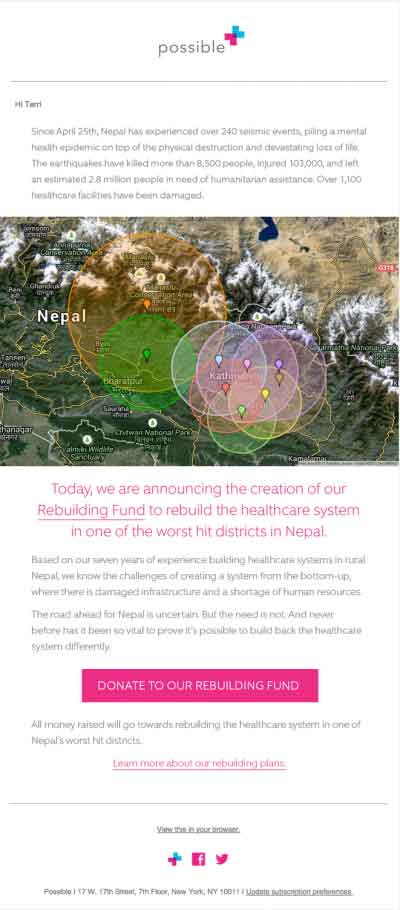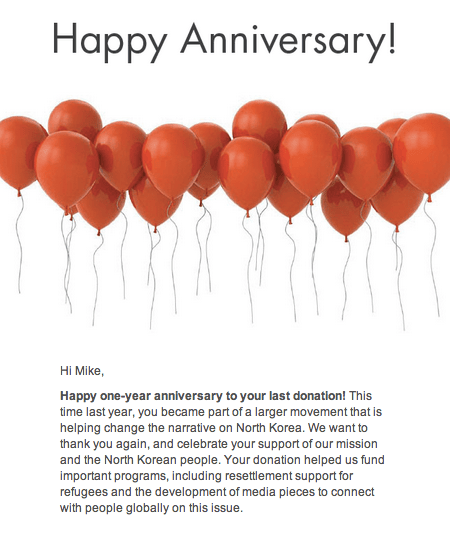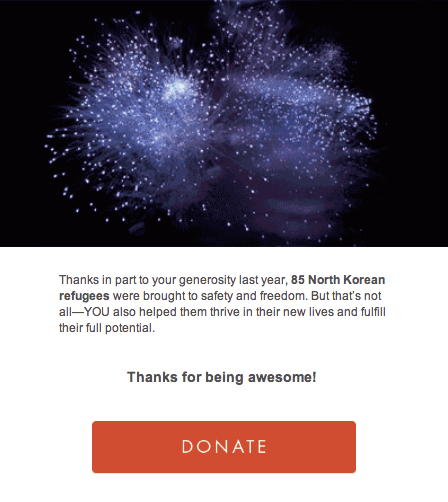How and Why Email Appeals Aren’t Like Fundraising Letters

Ah, the standard fundraising letter. You know the one. It’s well written and thoughtful, but it’s often long and at risk for being thrown out with the junk mail. While that risk exists with email too, consider a significant benefit that makes it worthwhile: you can customize messages to optimize engagement.
Direct mail remains important to many organizations’ fundraising strategies, and even if email isn’t your organization’s number one donation generator, it’s important to be able to craft an engaging and activating online appeal.
Like fundraising letters, an email appeal is crafted for a specific campaign, event, or occasion. However, email appeals should be distinct from traditional fundraising letters. Here’s are three ways to write fundraising emails that engage, delight, and activate supporters.
1. Write Less Than in Fundraising Letters
Most email readers spend 0-15 seconds on an email. If you don’t capture supporters’ attention quickly, or if you take too long to get the point, you’ll likely lose them altogether. The best marketers know that the first few seconds are imperative to keep their readers engaged through the end of the email.
What you can do in your fundraising email: Try to incorporate an image that will help you make a strong connection with readers from the get-go. An image can set the context and tone of your message and inspire readers to want to learn more or, even better, compel them to donate. Although images of people can be particularly moving for readers, consider infographics and maps too. Since we process images faster than words, an image that educates donors can help keep your message concise and compelling without overwhelming them. Information overload, after all, can dissuade readers from acting.
Take this example from Possible, a heath care organization that operates in Nepal. They use a map to represent the extent of the devastation from the earthquake in May. Statistics in the first paragraph paint a full picture and create a sense of urgency for readers. Possible also weaves in their story and speaks briefly about their role in the region, which reestablishes credibility with supporters. Right before the donate button is a great place to remind them of why they supported you in the past. “Here’s why you should donate again, now.”

There’s no need to get lengthy in email. Your passion for the cause might compel you to include a lot of stats and stories, but people’s attention will wane and they’ll succumb to information overload. Pick one or two key points that highlight why they should support your campaign and keep the message brief.
2. Delight Donors With Personalization
Fundraising letters have some degree of personalization, if only for the fact that they are delivered via snail mail. Whether typed or handwritten, we can get pretty excited about receiving an envelope in the mailbox these days, especially if it’s from an organization we love.
Today, however, personalization goes beyond inserting someone’s first name into a message. With a fundraising email, organizations have an opportunity to speak directly to a donor’s history and preferences. Here’s a good motto to follow with email: show them you know them.
What you can do in your fundraising email: Segment your donor database. Web applications have the ability to save information like a donor’s last donation amount, birthday, first donation date, and any other tidbits you capture from them on a donation form. You can then leverage that information to send email appeals at just the right time. These might include…
- A “Happy Birthday” fundraising email
- An “It’s our anniversary!” fundraising email
 This is also a great opportunity to ask people to give again:
This is also a great opportunity to ask people to give again:
- An “Upgrade your donation” email
- A “thanks for attending our year-end gala, here’s how you can continue your support of this cause” fundraising email
Despite being mailed to donors, not all fundraising letters feel personal, but all fundraising emails have the potential to delight supporters with a personal touch.
3. Build, Measure, Learn
With an email marketing platform, you can easily test what variation of your appeal gets the best response.
For example, you might leverage the characteristics of your donor segments to optimize the message you send to a group. As your organization learns more about how each segment responds, you’ll set yourself up to achieve better results with every new campaign.
That’s part of the beauty of email—you open the door to experimentation, which is at the crux of online fundraising success. You don’t have to wait weeks or months for direct mail results to figure out what to try next.
While fundraising letters are still very relevant, they don’t translate well to email. You’ll want to carve a specific email marketing strategy for your organization’s online fundraising efforts. To start, just remember to keep it short, delight donors, and measure your results.




